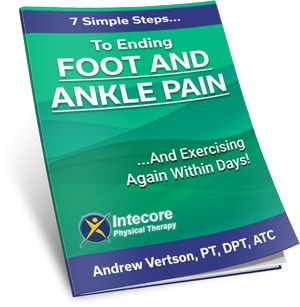
Exercising with back pain can be tricky—you want to stay active, but the last thing you want is to make things worse. The good news? With the right approach, exercise can actually be a fantastic way to help relieve back pain and strengthen the muscles that support your spine.
If you’ve been holding back out of fear of aggravating your pain, don’t worry. In this guide, we’ll cover 5 essential guidelines for exercising safely with back pain.
More Posts Like This From Intecore Physical Therapy:
What Does a Herniated Disc Feel Like? 5 Signs You Shouldn’t Ignore
5 Ways to Treat Chronic Back Pain Without Surgery
Experience Lasting Relief: 5 Proven Strategies for Lower Back and Hip Pain
Table of Contents
1. Get a Professional Assessment First
Before jumping into any exercise routine with back pain, it’s crucial to understand what’s causing it. Back pain can have many sources, from muscle strain to disc issues, and knowing what’s behind your pain helps you choose exercises that won’t worsen it. A physical therapist can guide you on safe movements, specific areas to strengthen, and exercises to avoid.
2. Warm Up Properly
A proper warm-up can make all the difference when it comes to protecting your back. Gentle movement warms up your muscles, increases circulation, and prepares your body for exercise. Without it, your muscles can be stiff and more susceptible to strain.
Try dynamic stretches like torso twists or leg swings, or even a few minutes of light cardio like walking. Warming up helps set a strong foundation for your workout and keeps your back supported from the start.
3. Focus on Core Strengthening
When it comes to back pain, your core is key. Strong core muscles help support the spine, easing pressure and preventing extra strain on your back. Core exercises don’t have to be intense—even gentle strengthening moves can make a big difference.
Focus on low-impact core exercises like planks, bridges, or gentle ab exercises. These moves engage your core without putting too much pressure on your back, helping stabilize your spine and prevent future pain.
4. Avoid High-Impact Movements
High-impact exercises, like running or jumping, can put a lot of strain on the spine. If you’re dealing with back pain, opting for low-impact activities is a safer way to stay active. Low-impact exercises are easier on your back while still offering great cardiovascular and strength benefits.
Try alternatives like swimming, cycling, or the elliptical machine. These low-impact options allow you to stay active and protect your back at the same time.
5. Prioritize Good Posture
Good posture isn’t just for standing or sitting—it’s essential during exercise too. Proper alignment protects your spine, reducing the risk of strains and keeping your back muscles engaged correctly. Bad posture can sneak up on you during weightlifting, cardio, and even stretching, so staying mindful of your form is key.
Tip: Keep your spine neutral, shoulders relaxed, and core engaged. If you’re lifting weights, avoid rounding your back and focus on controlled movements that support good posture.
Need Some Help With Back Pain?
If you’re finding it difficult to manage back pain and it’s affecting your quality of life, we’re here to help you!
Simply call: 949-597-2103 or fill out our quick form and tell us what’s going on. Click here to fill out the form.
If you’re not ready to speak on the phone, we get it! That’s why we have created this FREE back pain tips report, click here to download it.

- Why Are My Feet Swollen? Common Causes Explained - June 2, 2025
- What Is Restless Leg Syndrome? Symptoms, Causes, and Relief Options - May 5, 2025
- Finding Your Balance: Inside and Out - April 22, 2025













